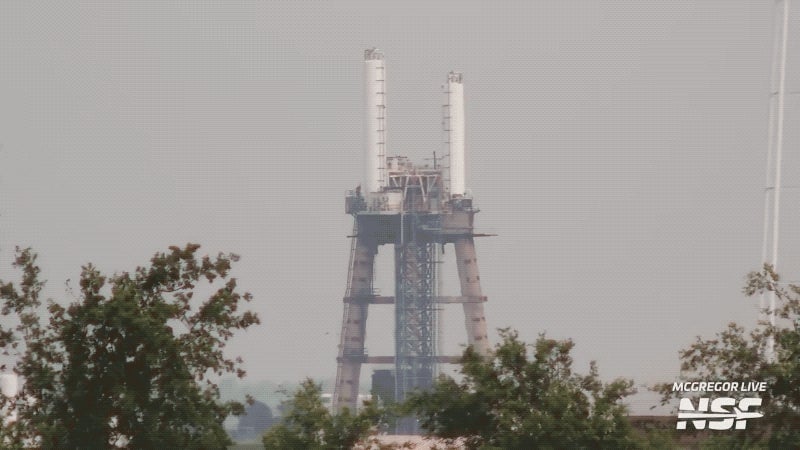A SpaceX engine test ended in a huge fireball
The test of an upcoming Raptor engine went sideways, causing the test stand to be engulfed in flames

A qualification test of a Raptor 2 engine has resulted in a dramatic explosion at SpaceX’s McGregor facility. The company has yet to comment on the incident, but it’s unlikely to affect the upcoming fourth test launch of the Starship megarocket.
Suggested Reading
The incident occurred on Thursday at around 4:15 p.m. local time at SpaceX’s Rocket Development and Test Facility in McGregor, Texas. Video footage from NASASpaceflight captured the mishap, showing the Raptor engine shutting down approximately 14 seconds after ignition. Following the shutdown (which appeared to be normal), vapor continued to linger and dissipate beneath the engine, but a small fire then appeared at the bottom of the testing stand. The flames grew and traveled upwards, culminating in a gigantic fireball that engulfed the entire tower.
Related Content
SpaceX has not yet commented on the incident, and it’s unclear if the blast caused any damage to the Raptor engine or the test stand. The likely gasses involved in the explosion are methane and oxygen. SpaceX’s Raptor engine uses liquid methane (CH4) as its fuel and liquid oxygen (LOX) as its oxidizer. If there was a leak or combustion anomaly, these gasses could mix and ignite, resulting in a kind of fuel-air bomb that created the blast seen on Thursday. That something might have exploded on the test stand as a result of the fireball is another possibility, but we’ll have to wait for SpaceX to provide more details.
Although the event was dramatic, anomalies during qualification tests do happen. SpaceX runs qualification tests of its engines prior to incorporating them into operational rockets to ensure they meet performance and safety standards. SpaceX is currently testing Raptor 2 engines, which feature improved performance, higher efficiency, and greater reliability compared to their predecessors.
It’s unlikely that this incident will delay IDF-4, the upcoming fourth launch of SpaceX’s experimental Starship megarocket, which uses Raptor engines. The company performed a wet dress rehearsal of the launch system on May 20, with company CEO Elon Musk tweeting that “Starship Flight 4 [should happen] in about 2 weeks,” which should be around the first week of June.